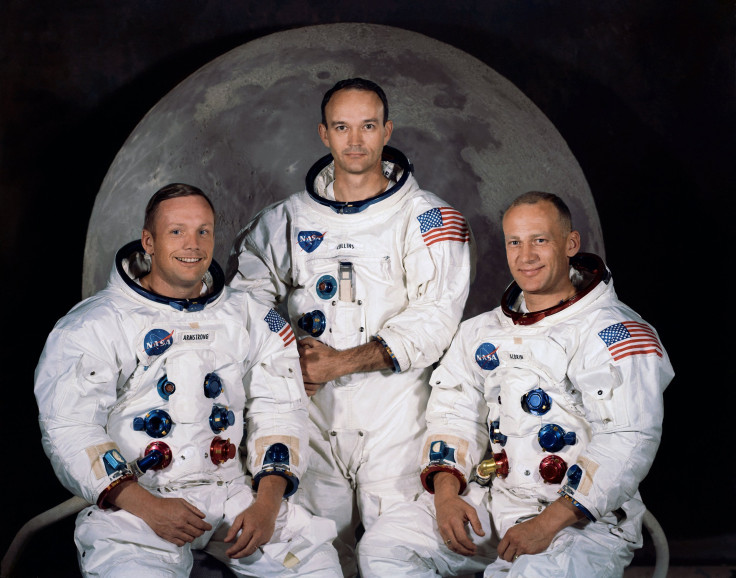Space Odyssey: Were The Apollo Moon Landings Faked By Film Director Stanley Kubrick? [VIDEO]

Conspiracy theorists have long maintained that man has never really landed on the Moon – that the fabled Apollo moon missions were fraudulent and “orchestrated” by NASA.
Over the past 40-plus years since Neil Armstrong first (allegedly) took that “small step for man,” naysayers have spewed a bewildering array of arguments claiming the Apollo missions were fake.
One of the most interesting strands in these web of conspiracy theories has to do with the renowned American filmmaker Stanley Kubrick, who had released the science-fiction epic "2001: A Space Odyssey" in April 1968, more than a year before Armstrong’s historic Apollo 11 mission to the moon.
Conspiracy buffs believe that U.S. technology simply could not have engineered the extraordinary undertaking of sending a spacecraft almost a quarter-billion miles to the Moon and safely landed astronauts on the surface – then brought them back to earth in one piece. Some also suggest that the entire space program was “staged” in a game of one-upmanship with the USSR.
Thus, some theorists allege that NASA officials approached Kubrick sometime in early 1968 (when production of "2001" was finishing) and asked him to film "footage" depicting an earth ship landing on the moon and a space traveler (Armstrong) walking on the lunar surface.
Indeed, "2001" expertly and movingly depicted not only a grand vessel flying to the moon, but also detailed a complex and sophisticated human colony there.
To attract Kubrick, the conspiracy adherents claim, NASA offered him money as well as access to Roswell, the mysterious site in New Mexico where an alien spaceship allegedly crash-landed in the late 1940s, in order to examine the extraterrestrial artifacts and even corpses stored there.
Not only that, but government officials allegedly threatened to reveal that Kubrick’s younger brother Raul was once a member of the American Communist Party – leading to Kubrick’s assent.
Conspiracy buffs believe the Apollo 11 take-off from Florida and the splashdown in the Pacific Ocean a few days later were real – but everything in between amounted to a fictitious Kubrick production.
Where were Armstrong and his crew after they lifted off from earth? Conspiracy theorists allege they remained in their craft in a low orbit around the earth before they received a “signal” from Houston to begin their descent back to terra firma.
In essence, they claim that both Apollo 11 and Apollo 12 missions (the latter in November 1969) were bogus – that Kubrick and a team of special-effects experts filmed phony landing missions at a sound studio in Huntsville, Ala. and elsewhere.
Apparently, Kubrick’s “deal” with NASA broke off thereafter over some kind of disagreement – allegedly, the space agency recruited other filmmakers to stage subsequent moon missions.
Then the story takes an even more bizarre twist. Conspiracy theorists further believe that Kubrick’s 1980 masterpiece “The Shining” (based on a story by Stephen King) was actually the film director’s veiled “admission” that he perpetrated a massive cosmic fraud 11 years earlier.
Jay Weidner, who runs a webpage called "Secrets of the Shining,” offers a complicated line of argument for this explanation. Essentially, it boils down to this: in the film, Jack Torrance (played by Jack Nicholson) agrees to manage the gloomy Overlook Hotel with his wife and his son Danny through the long winter season.
Weidner claims that Jack and Danny represent Kubrick himself; the hotel is the U.S. (built on an Indian burial ground, with the manager even wearing a red-white-and-blue suit); and the oncoming winter represents the Cold War against Soviet Russia.
By managing and protecting the hotel (America) against the bitterly cold winter (the Russian threat), Jack Torrance (representing an aspect of Kubrick himself) descends into madness.
Weidner goes into other minutiae to defend his assertion – i.e. ,“Room 237” in the Overlook is the central haunted room (the Moon is an average of 237,000 miles from earth); and the two strange creepy little English girls (ghosts of murder victims) represent NASA’s prior Gemini (twins) space program.
“Room 237 represents the fake lunar set that Stanley had to create to make the lunar landings appear factual,” Weidner writes.
“But really, on this set, and in this room, nothing is real.”
For part of the film, little Danny wears an Apollo 11 T-shirt.
Bear images (the symbol of Russia) are all over the film as well – from stuffed bear toys to a particularly disturbing moment when a well-dressed man appears to be giving fellatio in a hotel bedroom to someone dressed in what looks like a bear-suit.
In the shocking scene where Jack Torrance’s wife realizes that her husband (a struggling writer) has done nothing but repeated the phrase "All work and no play makes Jack a dull boy" thousands of times – Weidner suggests that “All” actually refers to “A11” or “Apollo 11.”
Thus, Torrance’s agreement with the caretakers of the Overlook is a metaphor for Kubrick’s agreement with the U.S. government to stage a huge hoax (the moon landings).
In addition, to solidify the link between fiction and reality, as Jack Torrance deteriorates mentally and physically, his hair becomes long and unkempt and he dresses slovenly – that is, resembling Kubrick’s physical appearance at the time.
Aside from the Kubrick angle, conspiracy theorists have amassed a huge trove of evidence attesting to their fervent belief that the NASA space missions were all faked – their “facts” range from the compelling to the absurd.
However, if the moon landings were indeed fake (considering the thousands of people involved in these operations and the tens of billions of dollars expended), it would amount to the greatest, most magnificent hoax in human history.
© Copyright IBTimes 2025. All rights reserved.





















